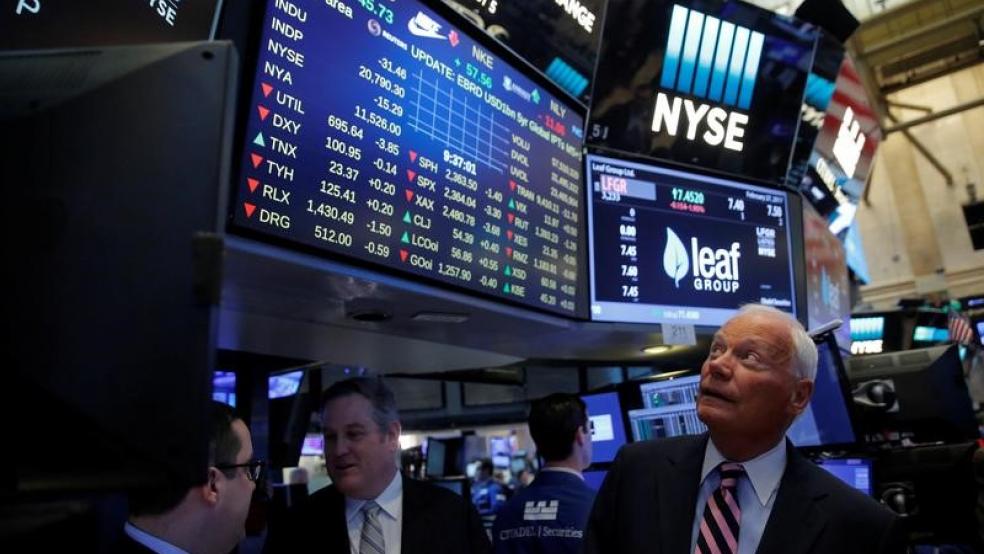Can the Dow finally push past 20,000? Market bulls are trying again after failing to lift the index over the threshold over the last two weeks — unable to muster the last ounce of strength needed to bag this psychological milestone before the long Christmas weekend.
The extended struggle is surprising given the market's tendency to nab fresh highs ahead of holiday breaks and the historic strength of the post-election uptrend. The Dow has climbed for seven consecutive weeks, a run unmatched since the "Bullard bounce" of late 2014 that ended the Ebola scare stocks suffered in October that year.
And the failure to take 20,000 is downright odd considering just how lofty expectations are heading into 2017. Perhaps some apathy is setting in?
Related: 10 Ways the Energy Markets Could Surprise Us in 2017
To be sure, investors and money managers are loaded up. The latest survey of active money managers from the National Association of Active Investment Managers, as cited by SentimenTrader's Jason Goepfert, shows optimism near the highest levels in history.
Fundamental expectations are strong as well. S&P 500 earnings growth is expected to total 3 percent in the fourth quarter, according to FactSet, with growth accelerating into 2017 for a full-year result of 11.4 percent — definitively putting the 2015-2016 earnings recession to bed. And according to the Atlanta Fed's GDPNow real-time estimate, GDP growth is expected to clock in at 2.5 percent for the fourth quarter, an acceleration from the tepid pace seen at the start of the year.
Of course, many of the bulls’ hopes rest on the notion that President-elect Donald Trump's fiscal policy will deliver increased disposable income for consumers, an infrastructure spending splurge and a corporate repatriation tax holiday that will ultimately boost share buybacks.
Related: Obamacare Repeal Could Provide a Huge Tax Break to the One Percent
So why do investors keep getting cold feet as the Dow flirts with the 20,000 threshold?
Perhaps it’s the weight of market history, as investors realize that major thresholds for the Dow often indicate medium-term high water marks. Dow 100 proved troublesome throughout the 1910s. Dow 1,000 set the ceiling for the market between 1964 and 1982. Dow 10,000 was won, lost and won again in a decade-long, back-and-forth battle that finally ended in 2010.
More recently, the Dow struggled to break north of the 18,000 level from late 2014 through July 2016.
One other possible explanation is that Wall Street equity strategists are, on the whole, surprisingly dour on the outlook for 2017, mainly on valuation fears and the drag from higher expected interest rates. According to Goepfert, the average strategist expects the S&P 500 to end 2017 barely 4 percent ahead of where it is now. That's the weakest annual gain estimate since forecasts for 2003 were being made in late 2002, when war with Iraq loomed.
Related: Oil Rises Further Above $55 as Looming Supply Cuts Provide Support
This is notable for two reasons. One, normally strategists just add 9 percent or so to wherever stocks are trading heading into the holidays and call it good. So this is unusually cautious. Second, there has been a large reduction in the variability of these forecasts — many of the 2017 targets are between 2,300 and 2,350 — indicative that some groupthink is setting in.
Here's the nerve-rattling kicker: The last time groupthink was in play to such a degree was at year-end 2007, when strategists were looking for a 9 percent gain in 2008. Instead, the market crashed nearly 40 percent.







